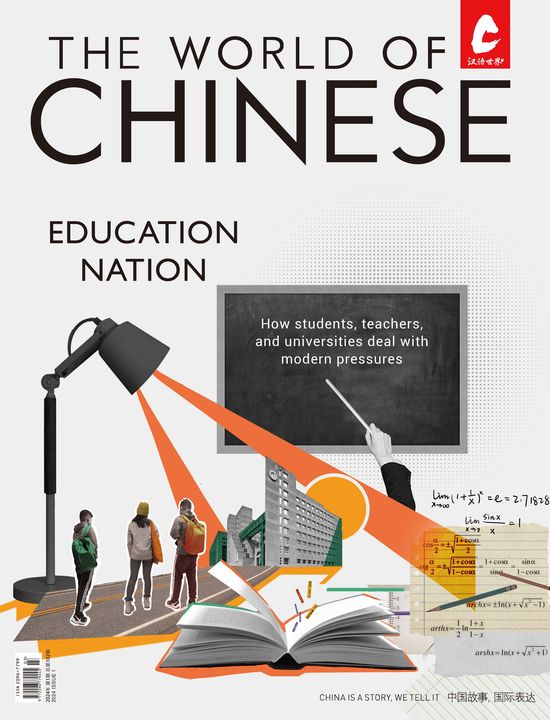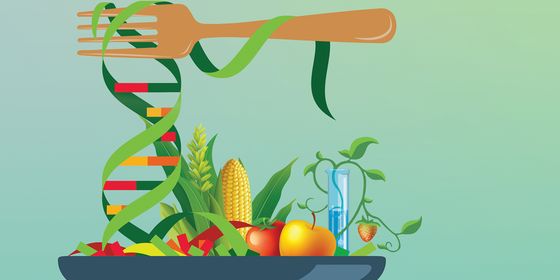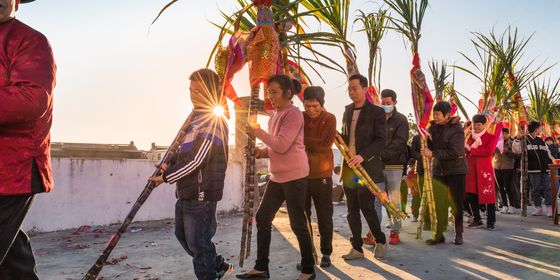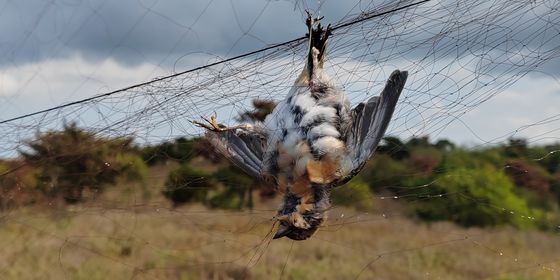With Covid-19 affecting domestic farming and global food supplies, can China ever reach its goal of food security?
As farmers headed to their fields of golden ripe wheat near Zhumadian in central China’s Henan province this June, the village Party secretary wasn’t far behind.
In a viral video posted on Weibo on June 22, the secretary berates a farmer who has just begun harvesting his crops: “Get a Covid test!” he roars, as a crowd of villagers watch on. “You can’t harvest until you’ve got one!” Sickle in hand, the farmer retorts: “It’s already ripe, how can I not harvest it?” The official persists until eventually the exasperated farmer leaves the scene with the words, “Fine, then you do it yourself!”
Since the pandemic began, Covid-19 has been more than just a strain on the country’s medical system and the livelihoods of ordinary people: It has placed huge pressure on China’s whole agricultural sector, threatening the country’s food production and distribution networks. When the northeastern Jilin province, the country’s second-biggest corn producer and fifth biggest producer of all grains, imposed travel restrictions and months-long lockdowns to battle its worst Covid-19 outbreak this spring, farmers reported being unable to go out into their fields, while many who worked in the cities in the off-seasons weren’t able to return to their hometowns for planting.
These challenges have affected consumers too—in November last year, China’s Ministry of Commerce encouraged families to stockpile daily necessities for the winter, sparking fears that food shortages were on the horizon. And in Shanghai, which entered a months-long citywide lockdown at the beginning of April this year, residents struggled to get food, and even resorted to bartering for daily necessities, as supply chains broke down.
For most of China’s population, food scarcity during wars and the “three years of starvation” in the mid-20th century are distant memories today—if they even remember it at all. Yet food security has never been off the national agenda, and China’s leaders are keen to make the country self-sufficient in food production as the pandemic disrupts international supply chains, countries start banning exports on vital foodstuffs, and China’s diplomatic relations deteriorate with several major food trading partners.
Feeding 20 percent of the world’s population on 7 percent of its arable land, and perhaps only 5 percent of its water resources, poses a massive challenge. Urbanization and industrialization, an agricultural system dominated by small household farms, deteriorating ecological resources, and increasing food consumption levels all make competing demands, while new goals to increase self-sufficiency sometimes contradict the country’s long-term agricultural sustainability.
Food production in China has soared over the last three decades as farms have become increasingly mechanized and productive. The country’s grain production rose from 430 million tons in 2003 to 682.9 million in 2021. Under China’s 14th Five Year Plan, which runs to 2025, the country intends to maintain annual grain production of 650 million tons.
Yet growing incomes have caused consumption to also rise sharply. In 1980, the Chinese consumer ate an average of 2,163 kilocalories a day, but that rose to 3,200 kilocalories by 2018 according to the UN Food and Agricultural Organization, higher than the likes of Japan and New Zealand. China is also the largest meat consumer (though not the largest per capita) in the world.
According to the Global Food Index, which ranks countries on their food security, China ranked second in the world in 2021 for the “availability” of food in the country, but it placed 34th overall for “food security,” which takes into account the affordability of food, resilience of agricultural production, and food safety.
For farmers, rising costs are a serious impediment to answering the country’s call to increase production, and to earning a livelihood. Shen Baolu, a 64-year-old farmer in Anyang, Henan province, works his 20 mu (1.33 hectare) plot of land alone “for basically no income,” despite using more machinery in recent years. “The harvests have definitely become larger than before, but the costs have gone up too,” Shen tells TWOC. “Us common folk are suffering.”
Protecting the Rice Bowl: China’s Relentless Quest for Food Security is a story from our issue, “Public Affairs.” To read the entire issue, become a subscriber and receive the full magazine.













